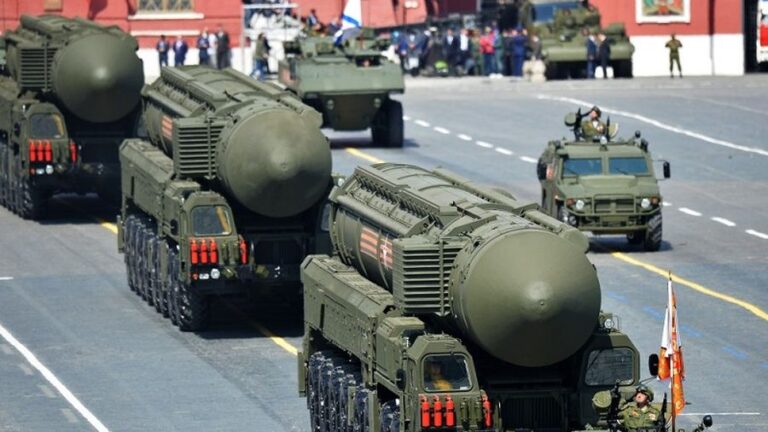Myanmar – Сaught between India and China
Myanmar is a relatively small country on the Indochina peninsula. Its close neighbors are India, China and the other countries on the peninsula, Its geographical position means that it serves as a buffer zone between the two competing Asian giants, yet its role is not limited to that.
In terms of land access, India is largely cut off from the rest of the Eurasian landmass by immediate neighbors with whom its relations are far from friendly, namely Pakistan, Afghanistan (which has close ties to Pakistan), and its main rival, China. Nevertheless, although they are rivals there is a huge volume of trade between China and India. But since India is largely cut off from China by the barrier of the Himalayas, a considerable amount of the trade between the two countries passes through Myanmar. Myanmar also provides India with land access to the countries of South East Asia. As a result the available land routes between India and other countries in Eurasia are fairly limited in number, and depend heavily on Myanmar.
China is not as cut off from the rest of Eurasia as India is, but nevertheless is also, in terms of geography, heavily dependent on Myanmar. The fact is that China’s economy is heavily dependent on the import of large volumes of hydrocarbon fuel, much of which is transported to China by sea from the Middle East. This sea route runs along the continent’s southern coastline, passing from the Indian Ocean to the Pacific Ocean via the Strait of Malacca – a narrow waterway between the Malayan peninsula and the island of Sumatra.
It is no secret that tensions in the Asia-Pacific region are high, and the disagreements between China and the other powers in the region – especially the US, which is supported by India, Australia and other countries – are growing more serious. If the tensions between these countries and China were to break out into open conflict then their navies would be able to block the Strait of Malacca without difficulty, thus depriving China of the imports it depends on for much of its electricity. For China, transportation via Myanmar provides one possible solution to this problem. In a bid to establish good relations with Myanmar’s government and gain a foothold in the country, it has constructed oil and gas pipelines from ports in Myanmar to its own territory. As a result, many of the tankers loaded with hydrocarbons destined for China can now unload their cargo in Myanmar rather than having to pass through the Strait of Malacca, thus diversifying China’s fuel transport routes and reducing transportation times. However, to ensure the pipelines remain in full working order China needs to maintain a long-term presence in Myanmar and somehow retain its influence in the country.
India needs to do the same thing to avoid losing its land routes to China and South East Asia. Both India and China are thus competing for influence in Myanmar, and the winner will be able to defend its interests and also gain leverage over its rival.
It should also be borne in mind that Myanmar is not a wealthy country with a population of almost 53 million, and thus itself represents an important market for goods and a source of cheap labor.
At present, China is Myanmar’s closest trading partner. In the last decade China has launched a number of important infrastructure projects in Myanmar, including the pipelines mentioned above. Together, these projects form the China-Myanmar Economic Corridor (CMEC), part of China’s international Belt and Road Initiative. One element of the CMEC project is the proposed construction of a deep-sea port at Kyaukphyu on the Indian Ocean’s Bay of Bengal. Hydrocarbon shipments destined for China will be unloaded in that port, thus avoiding the trip through the Strait of Malacca. It will also provide China with access to the Indian Ocean. Myanmar has granted China a 50-year lease of Kyaukphyu, and India is concerned that the port, which is close to its Andaman Islands, may be converted into a Chinese naval base. Among other initiatives, the CMEC also includes the development of an economic cooperation zone adjoining Myanmar’s border with China. China has committed to investing a total of approximately $100 billion in the Economic Corridor.
China’s involvement in Myanmar is of great concern to India, which, for all its wealth, is unable to compete with the People’s Republic in terms of investment volumes. However, in February 2021 a coup in Myanmar brought a new military government into power, raising India’s hopes of a change in the situation. Pro-Indian media reported that many in Myanmar’s military are unhappy with China’s influence over their country. They cited the examples of Sri Lanka, the Maldives and other countries that China has invested large amounts of money in and which have subsequently found themselves caught in a “debt trap,” as a result of which the Chinese-funded infrastructure facilities on their territory now operate primarily to serve Chinese interests. India considers that the new government in Myanmar may reconsider, and maybe even withdraw entirely from the CMEC plan.
Presumably, India’s hopes are founded on the fact that Myanmar’s military, a major presence in the national government even before the coup, have long been critical of their country’s close cooperation with China. Thus in 2011 President Thein Sein, a protegé of the military, cancelled the Myitsone Dam project. This large infrastructure project on the Irrawady River was being financed by Chinese companies, which had already invested $3.6 billion in the project. The construction provoked large-scale public protests and Thein Sein promised that as long as he remained in power it would not go ahead. However, in the 2015 general election the military government was voted out, and replaced by the Chinese-supported National League for Democracy (NLD) headed by Aung San Suu Kyi – an opposition politician who had long been seen as pro-western and promoting western values. Despite that reputation, during her years in power she visited Beijing on numerous occasions and consulted the Chinese leadership on many key issues. Significantly, she was involved in looking into the activities of Chinese companies in Myanmar and supported allowing them to continue with their projects.
One important factor in the NLD’s 2015 win was the previous military government’s failure in talks conducted with the leaders of illegal armed groups in order to ensure a peaceful election campaign. Myanmar has been in the grip of a low-intensity civil war for several decades, and part of its territory is controlled by various extremist and separatist groups. According to some reports, many of these groups, including the powerful United Wa State Army and the Kachin Independence Army are pro-China and may even be controlled by Beijing. These two powerful groups are among those who refused to sign a ceasefire with the military government in 2015, thus damaging its reputation on the eve of the elections. It is possible that these two groups should be seen as another factor providing China with leverage over Myanmar. A leverage that China may have used to help bring about the NLD’s election victory in 2015.
But, as already mentioned, the 2021 coup brought down the NLD government and put the military back in power. It is likely that the military have learnt from their failure in 2015 and will now proceed with more caution. Moreover, international reactions to the coup were extremely negative: the US threatened sanctions, the EU condemned the junta and Myanmar’s close neighbors and fellow ASEAN states broke off relations. Despite the fact that Myanmar is one of the most important members of that body, the new leadership was not invited to any of the high-level meetings of ASEAN in October 2021.
Significantly, China failed to speak out against the coup. With Myanmar sidelined by the West and its partners in ASEAN, China now has the opportunity to step forwards as its main partner, knowing that Myanmar is in no position to refuse its support.
India had also refrained from imposing any sanctions on Myanmar, and has limited itself to expressing its “concern” about the events. After all, India is also an investor in Myanmar, with its own economic and infrastructure projects, including the special economic zone in the Sittwe deep-sea port, the India-Myanmar-Thailand highway and the Kaladan multi-modal transit transport project which will provide land and sea connections between India and Myanmar. These projects have enabled New Delhi to retain its former position in Myanmar, and it is confident that its neighbor will provide it with access to South East Asia. Nevertheless, it is clear that China is much more active in Myanmar than India is – it is a much larger investor and also has other sources of leverage. That is why it is in Myanmar’s interests to retain a balance between the two Asian giants, even if at present China clearly has more influence over it than India – a situation that is unlikely to change in the near future.







